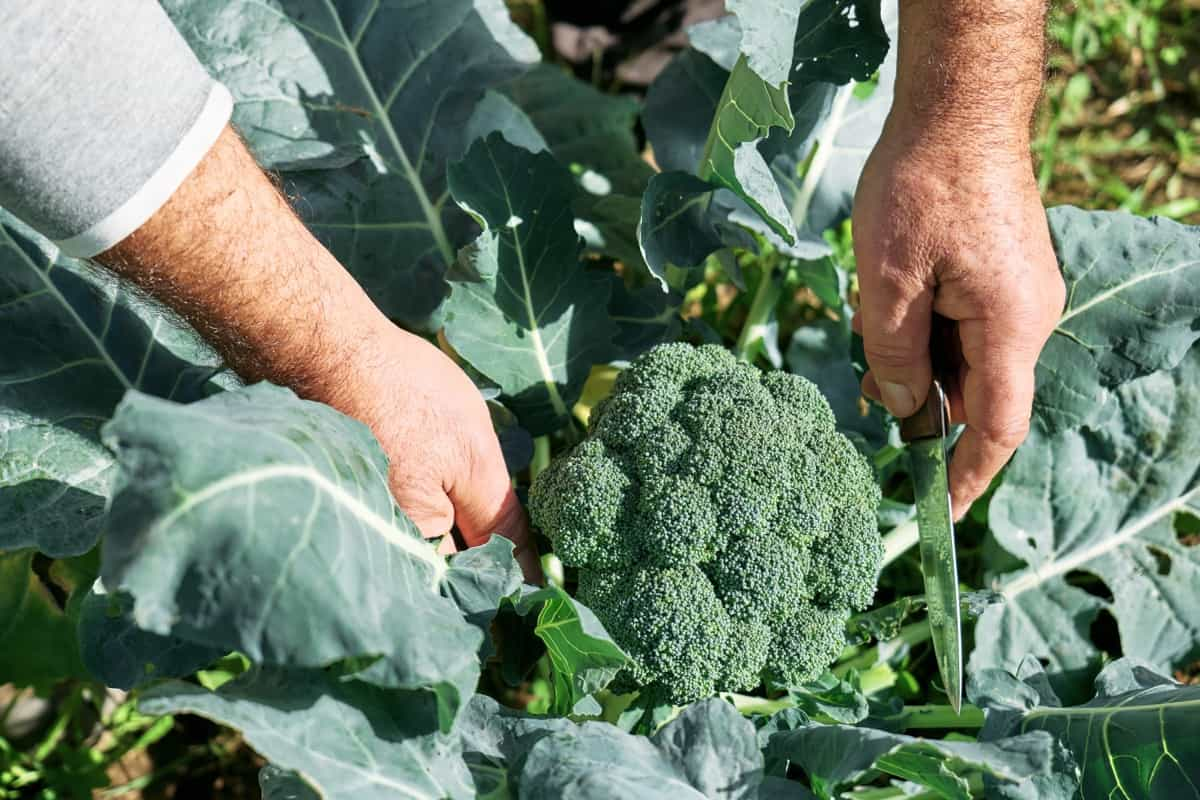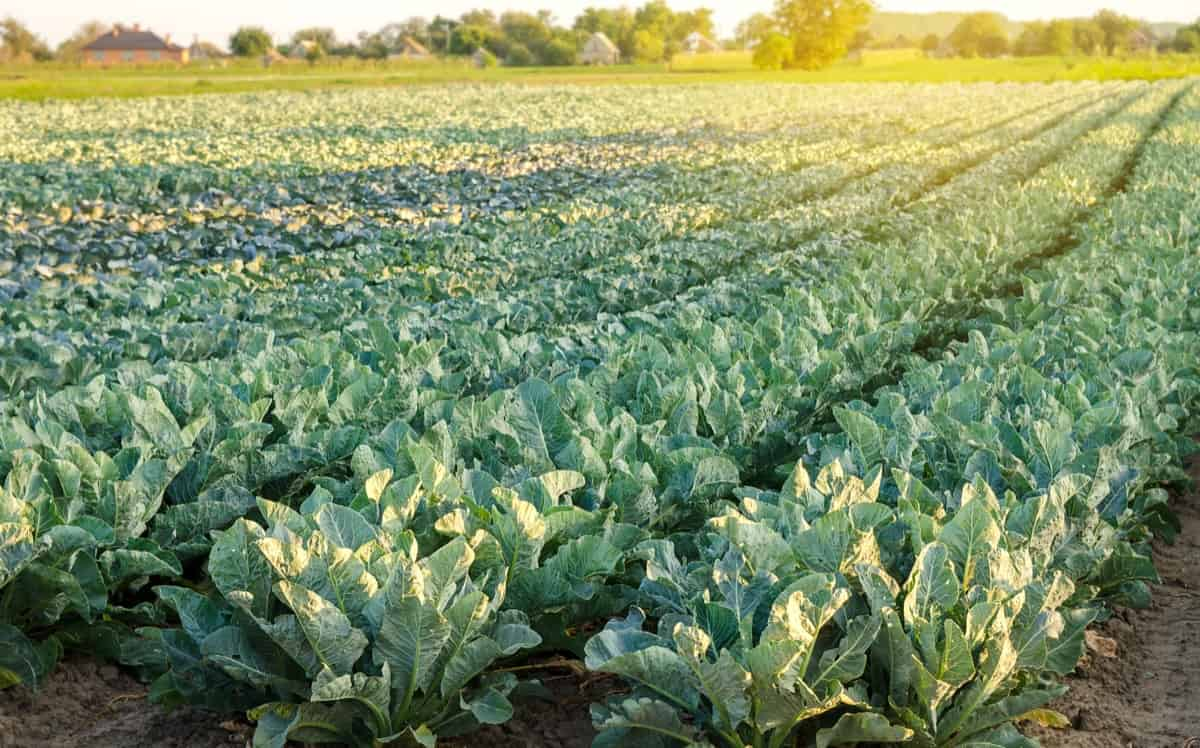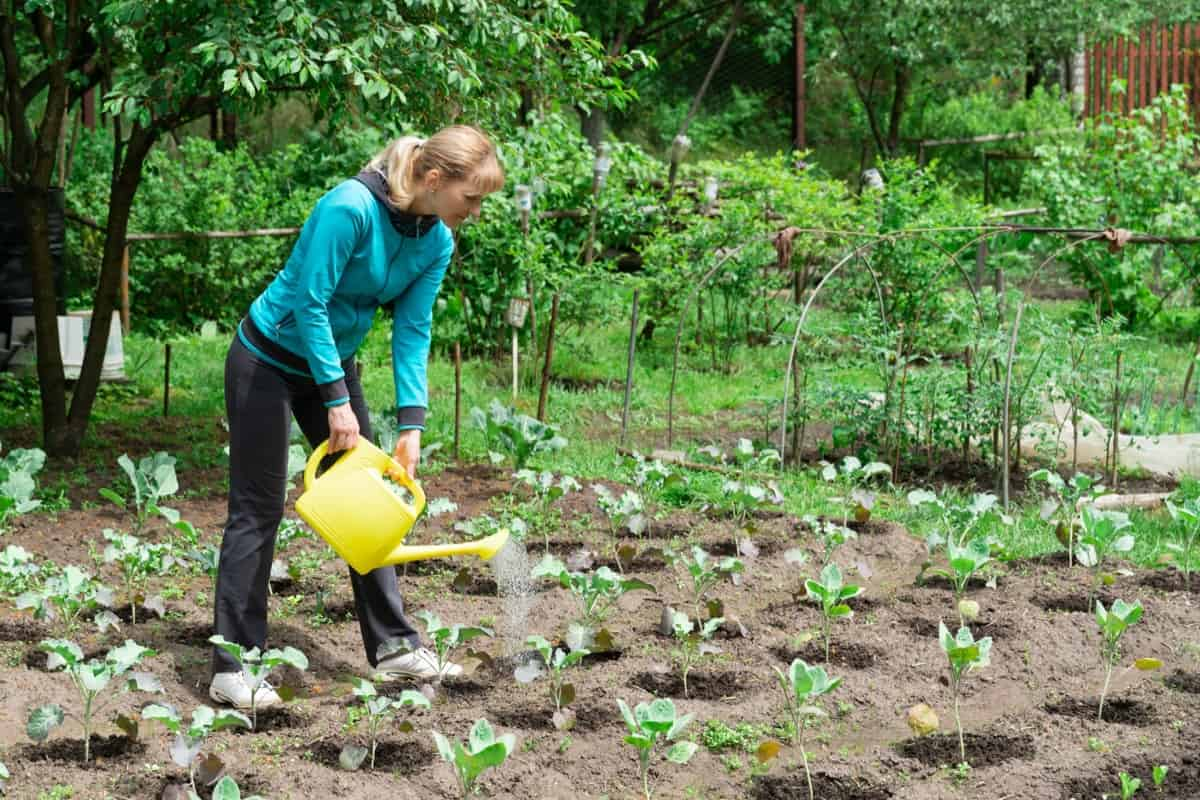Growing broccoli in hot climates can be challenging, as this cool-weather crop prefers moderately cool temperatures. However, it is possible to cultivate broccoli successfully in hot climates with proper techniques. Here are some effective techniques to grow broccoli in hot climates to consider.

Techniques to Grow Broccoli in Hot Climates
Choosing Heat-tolerant Broccoli Varieties
Green Magic: This variety is known for its exceptional heat resistance. It has been specifically bred to tolerate high temperatures without compromising taste or quality. Green Magic produces tight, medium-sized heads with a rich green color. It is a reliable choice for growing broccoli in warmer climates.
Green Emperor: Developed specifically for warm climates, Emperor is a dependable heat-tolerant variety. It forms large, tight heads with a deep green color. Emperor has a slightly sweeter taste compared to other broccoli varieties, making it a versatile option for culinary preparations.
Green Goliath: As the name suggests, Green Goliath is a robust, sturdy variety that can withstand high temperatures. It produces large, dense heads with a slightly blue-green hue. Green Goliath is known for its excellent flavor and texture, making it a favorite among broccoli enthusiasts.
Arcadia: With its exceptional heat tolerance, Arcadia is an excellent choice for gardeners in regions with scorching summers. It produces medium-sized, domed heads with a vibrant green color.
Providing Shade and Protection
- Shade Cloth: To reduce sun exposure, install a shade cloth over your broccoli plants. Choose a shade cloth with a density appropriate for your climate, ensuring enough sunlight to reach the plants while providing adequate protection.
- Row Covers: Use row covers made of lightweight fabric to create a temporary shade structure. These covers can be draped over the plants during the hottest parts of the day and removed in the evenings to allow for airflow.
- Natural Shade: Utilize existing structures or plant taller plants nearby to create natural shade for your broccoli plants. This can help reduce the intensity of the sunlight and provide relief from the heat.
In case you missed it: How to Pollinate Broccoli Plants: Hand Pollination, Natural Pollination Methods, and Tips

Mulching to Conserve Moisture
Mulching is an effective technique used to conserve moisture in gardens, particularly in hot climates, for growing broccoli. By applying an organic material layer to the soil surface, mulching helps to retain water, reduce evaporation, and regulate soil temperature, creating an optimal environment for broccoli plants to thrive. Spread a mulch layer around the base of the broccoli plants. Aim for a thickness of around 2 to 4 inches, ensuring that the mulch does not come into direct contact with the stems of the plants.
The mulch should cover the entire root zone of the broccoli plants, extending out to the drip line. To ensure the effectiveness of mulching, it is important to monitor soil moisture regularly. While mulch helps conserve moisture, it is still necessary to water the plants when needed. Check the soil moisture level by inserting your finger into the soil up to the second knuckle. If it feels dry at that depth, it’s time to water.
Watering Deeply and Regularly
It is crucial to water broccoli plants more frequently in hot climates to compensate for the increased evaporation rates. Aim to water the plants deeply at least twice a week, ensuring the water penetrates the soil 6 to 8 inches deep. Monitor the weather conditions and adjust the watering schedule accordingly. To water broccoli plants deeply, consider using the following techniques,
- Drip Irrigation: Drip irrigation is an efficient method that delivers water directly to the plant’s root zone. By placing drip emitters near the base of the plants, water is slowly released, allowing it to penetrate deeply into the soil without wastage.
- Soaker Hoses: Soaker hoses are another effective method for deep watering. These hoses release water slowly and evenly along their length, allowing the water to seep into the soil and reach the plant’s root system.
Using Drip Irrigation
- Prepare the Soil: Before planting, ensure the soil is well-drained and enriched with organic matter. Broccoli thrives in soil with a pH between 6.0 and 7.0.
- Install the Drip Irrigation System: Set up a drip irrigation system in your garden to deliver water directly to the plants. This can be achieved by connecting a main water supply line to the drip tubing. Place the drip emitters near the base of each broccoli plant.
- Consider a Timer: To ensure consistent watering, use a timer to automate the drip irrigation system. This will help maintain a regular watering schedule, especially during hot periods when plants require more water.
- Monitor Soil Moisture: Regularly check the soil moisture levels to ensure the plants receive adequate water. Adjust the drip irrigation system accordingly to avoid overwatering or underwatering.
Applying Organic Matter
Preparation
Before applying organic matter, it is important to prepare the garden soil properly. Start by clearing the area of any weeds or debris. Loosen the soil using a tiller or else garden fork, ensuring good drainage. Broccoli prefers slightly acidic soil, so it is beneficial to test the pH levels and make any necessary adjustments.
In case you missed it: 10 Common Problems With Garden-Grown Broccoli: Treatment and Solutions

Application Technique
- To apply organic matter effectively, follow these steps:
- Spread an organic matter, like compost or manure, evenly over the garden soil.
- Use a tiller or else garden fork to mix the organic matter into the top few inches of the soil.
- Ensure that the organic matter is thoroughly incorporated, creating a well-balanced mixture.
- After planting the broccoli seedlings or seeds, apply a layer of mulch around the plants to maintain soil moisture and regulate temperature.
Practicing Proper Spacing
- Spacing Between Plants: When growing broccoli in hot climates, providing a spacing of 18-24 inches between individual plants is recommended. This allows them to have enough room to grow without crowding each other.
- Spacing Between Rows: To maximize the growth of broccoli plants in hot climates, it is important to leave a gap of at least 24-36 inches between rows. It also helps create a well-ventilated environment, preventing the build-up of excessive heat and humidity.
Implementing Proper Timing
Proper timing is crucial when it comes to growing broccoli in hot climates. Choose the right time to plant the broccoli seeds or seedlings. The best time to start growing broccoli in hot climates is during the cooler months, preferably in early spring or late fall. This allows the broccoli plants to establish themselves before the intense heat of summer arrives. By planting at the appropriate time, you can ensure the broccoli matures before the extreme heat stresses the plants.
Using Row Covers or Tunnels
Row covers are lightweight fabric covers that create a barrier between the plants and the external environment. They help regulate temperature, protect the plants from excessive heat, and provide shade. By covering the rows of broccoli plants with these covers, you can create a more suitable microclimate for their growth. Row covers also offer protection against pests and insects, ensuring healthier broccoli plants.
Harvesting at the Right Time
Knowing when to harvest your broccoli is crucial for optimal flavor and quality. Harvest the heads when they are firm, tight, and have reached their full size. Waiting too long to harvest may result in open or loose heads, reducing their overall quality. Regularly check the plants for mature heads and harvest them promptly.
In case you missed it: Frequently Asked Questions About Growing Romanesco Broccoli from Seed to Harvest

Conclusion
By following these techniques, you can successfully grow broccoli in hot climates. You can enjoy a bountiful broccoli harvest with proper care and attention, even in hot weather conditions.
- Feed Your Flock for Less: Top 10 Tips to Save on Chicken Feed
- Ultimate Guide to Ossabaw Island Hog: Breeding, Raising, Diet, and Care
- Hatching Answers: The Top 10 Reasons Your Chickens Aren’t Laying Eggs
- Eggs and Economics: Breaking Down the Cost of Raising Backyard Chickens
- Defend Your Greens: Proven Methods to Keep Iguanas Out of Your Garden
- Ultimate Guide to Cinnamon Queen Chicken: A Comprehensive Guide for Beginners
- Ultimate Guide to California Tan Chicken: Breeding, Raising, Diet, Egg-Production and Care
- Ultimate Guide to Marsh Daisy Chicken: Breeding, Raising, Diet, and Care
- 10 Types of Chicken Farming Businesses You Can Start for Profits